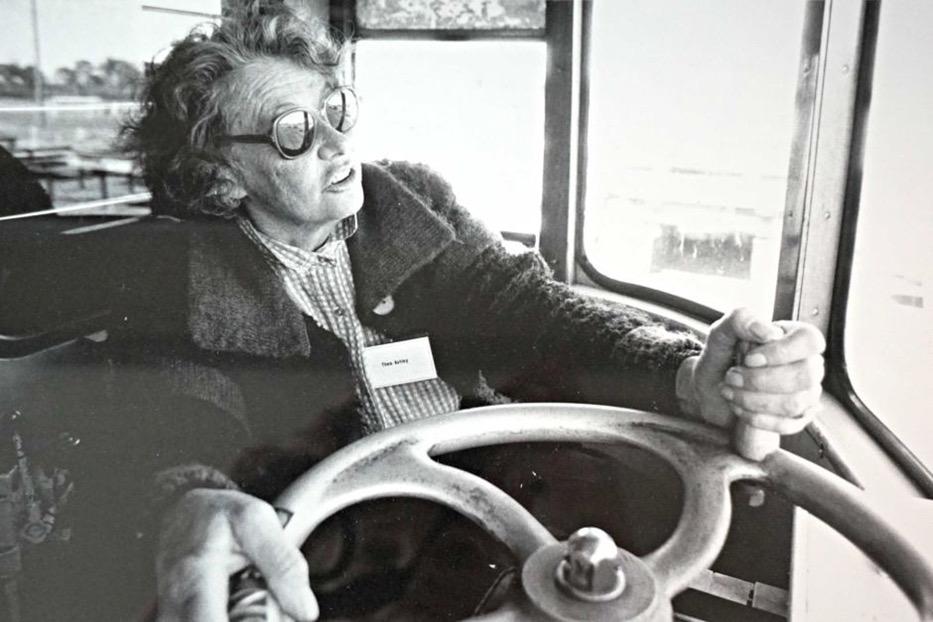
Author Thea Astley
Late in 1959, an up-and-coming novelist named Thea Astley knocked on the door of Dogwoods, Castle Hill. Her knock was answered by Manoly Lascaris, the lover and lifelong partner of Patrick White, who turned her away. Patrick was already seated at his desk. He would brook no interruption. Irked yet undeterred, Astley returned to Castle Hill in the new year with all the determination of a jilted lover, beginning an idolatrous friendship with tea and tattle and a self-serving gift in the form of a signed copy of her first novel, Girl with a Monkey (1958).
Some seven years later, White and Astley fell out spectacularly over the phone. They didn't speak to each other for fifteen years. During this time, White turned his predilection for ending friendships into a six-hundred-page portrait of the artist as a monstrous expressionist painter, The Vivisector (1970). Astley, who shortly after falling out of White's shadow became one of the first novelists hired to teach literature and creative writing at a university, wrote a svelte reply: The Acolyte (1972). This gleefully incisive yet lamentably forgotten novel, I argue, offers an up-close view of what would become an epochal change in the structure of Australia's literary field. In taking aim at tyrannical autodidacts, the great men who are (inaccurately) imagined to have single-handedly defined an earlier phase of Australian literary life, in a voice tempered to perfection by the daily vexations of life within the tertiary system, The Acolyte captures the emergence of an era in which institutions, rather than individuals, have come to exert a determining influence over our literary culture.
Dr Joseph Steinberg is a Forrest Foundation Postdoctoral Fellow at the University of Western Australia. His essays and reviews have been published in The Cambridge Companion to the Australian Novel, ALS, AHR, JASAL, the SRB, and elsewhere. He is nearing completion of his first book, a literary history of creative writing's emergence as a tertiary subject in Australia, which is titled The Program Goes South.
Location
Speakers
- Dr Joseph Steinberg
Contact
- Monique Rooney